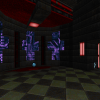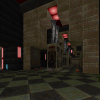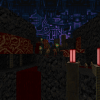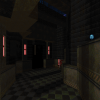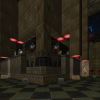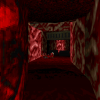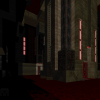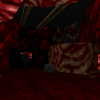Mechadon Vs. Vanilla
For the past 8 months, my mapping adventures have consisted almost entirely of vanilla maps for the upcoming megawad Back to Saturn X. I just recently finished my fourth map for the project, much to my relief. The entire experience has left me with an even better understanding of mapping for Doom, particularly within the limits that vanilla restricts you to. You really learn to do more with less, which is one of the best way to create amazing things. I can assure you right now that Back to Saturn X will be one hell of a wild ride when it comes out!
I had my shares of ups and downs working within those limits though. For me it was a painful process at first, though I quickly learned the basics. I came from the limit-removing area of Doom editing before joining the project. It had been years since my last vanilla map, and even that one didn’t really fit within the limits. So as you may expect, my mapping style had to shift in certain ways in order for it to fit into the vanilla mold. After I finished my first map, I worked out most of my growing pains to where I felt more confident in my abilities to create something within the set limits. Generally it seems that I like to create wide-open, porous spaces with lots of height variation and views spanning across tons of different areas. This does not mesh very well in vanilla though, especially if you want to have any sort of detail left. So my layout creation process shifted more towards smaller inside areas with many of the interconnections being smaller hallways. One-sided lines saved my ass a bunch of times and actually helped to force interesting architecture in many cases. It was a first-hand experience of what a limited working environment can do to force creativity.
However even though I enjoyed the creative experience, I still found it very easy to get aggravated working within some of vanilla limits and quirks. It turns out there are quite a few bugs and quirks that no one seems to mention to you when your making a vanilla map. For example, with this map I just finished, I was having an issue with a line action which quickly lowers the floor 8px above the highest adjacent floor. For some reason though, the floor actually seemed to raise up instead of lower. It turns out there’s a bug in vanilla Doom where if the floor in question is lower than -512px, and you try to run that line action on it, it will raise to -512px instead of lower as intended. So in effect you can’t use that action below -512px. And there are a lot of other vanilla~isms like that which aren’t readily known about (or certainly aren’t circulated through the community very well). Most of the time there are workarounds so it’s not too bad. But it can get really frustrating when you run into a bug like that and your not sure what’s causing it.
VPOs (Visplane Overflows) are the bane of my vanilla mapping existence. Unlike SEG overflows or many of the other vanilla static limitations, VPOs can completely break a map because of the way they crash Doom when the overflow occurs. So you can’t smudge the numbers like with the SEGS limitation (which just draws a HOM instead of the texture). Because you can’t smudge the numbers, you absolutely want to fix one when you come across it. If it’s a small overflow then usually it’s not hard to fix. Other times though you’ll end up having to redo a whole portion of a layout to get rid of the bugger. And that’s just fixing them! Finding them can be another ball game entirely. The problem with finding VPOs is that they can literally pop up from any point and any direction in a map. To truly have a VPO-less map, you’d have to test every possible coordinate position and view angle in the map. Obviously this is nigh impossible to do, so the best you can hope for is to cover all of the hot-spots in a map (views which show off a lot of structure at once). The best way to do this is to test over and over. And then get other people to test over and over. And so on until you don’t get any more reports of VPOs. So far this method seems to work fairly well although I’m still not convinced that my 4 maps are VPO free :P. Thankfully Chocorenderlimits makes this process 10x easier; I honestly don’t know how we’d manage without it.
With all of that said though, vanilla mapping is an incredibly fun and interesting experience. You really get a sense of what works best in Doom. The limits almost coerce you into making a map a certain way, and the end result ends up being something really fun because of those limitations. Maybe I’m giving too much credit to working within limitations, but that’s honestly what I’ve taken away from working on BtsX after 4 maps in. I think my vanilla growing pains will help me out with non-vanilla and even non-Doom projects in the future.
Annnywho, I know you guys want more than just boring text. So hey, how about some screenshots of that 4th map I keep talking about!
The name of the map is Miles Under the Skin. It’s a sort of bio-tech themed maps with a mostly linear flow and my usual paced gameplay. I decided to go with the flesh n’ tech theme after seeing some of the light tan metal/tech textures. They had sort of an odd look to them and so I thought that paired with their colors they would contrast nicely with fleshy pinks and rocky reds. From the visual perspective, I think this might be up there with one of the creepiest and coolest looking maps I’ve made in a long while. I took advantage of height variances and tight spaces so it feels like your descending and squeezing your way to a decaying techbase slowly being taken over by fleshy bits of hell. It works well with E3’s purple tech sky texture too (which I really love). But the best part of this map might actually have nothing to do with me! The mighty music man Jimmy put together one epic piece of ambient metal for this map which just puts the cherry on top. Jimmy has made music for each of my 4 BtsX maps, all of which are great and you should definitely check out!
Well I hope this post ended on a high note. I’m ending my personal mapping contributions to the project with the completion of Miles Under the Skin. Though I may end up doing a collaboration map or two in the future (provided I have the time and motivation). Everyone needs to know about Back to Saturn X as it really will be quite an awesome experience when it’s done 

